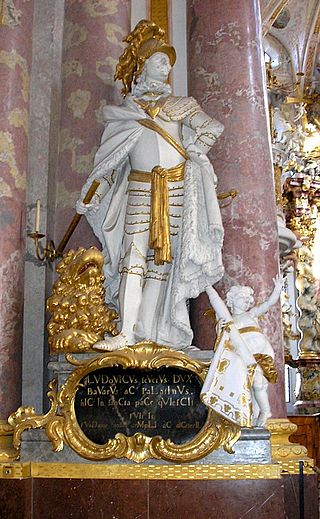
The House of Hanover is a European, royal house with roots tracing back to the 17th century. Its members, known as Hanoverians, ruled Hanover, Great Britain, Ireland, and the British Empire at various times during the 17th to 20th centuries. Originating as a cadet branch of the House of Welf in 1635, also known then as the House of Brunswick-Lüneburg, the Hanoverians ascended to prominence with Hanover's elevation to an Electorate in 1692. In 1714 George I, prince-elector of Hanover and a descendant of King James VI and I, assumed the throne of Great Britain and Ireland, marking the beginning of Hanoverian rule over the British Empire. At the end of his line, Queen Victoria's death in 1901, the throne of the United Kingdom passed to her eldest son Edward VII, a member of the House of Saxe-Coburg and Gotha, through his father Albert, Prince Consort. The last reigning members of the House of Hanover lost the Duchy of Brunswick in 1918 when Germany became a republic and abolished royalty and nobility.

The Duchy of Brunswick and Lüneburg, commonly known as the Duchy of Brunswick-Lüneburg or Brunswick-Lüneburg, was an imperial principality of the Holy Roman Empire in the territory of present day Lower Saxony.

The Principality of Calenberg was a dynastic division of the Welf Duchy of Brunswick-Lüneburg established in 1432. Calenberg was ruled by the House of Hanover from 1635 onwards; the princes received the ninth electoral dignity of the Holy Roman Empire in 1692. Their territory became the nucleus of the Electorate of Hanover, ruled in personal union with the Kingdom of Great Britain from 1714 onwards. The principality received its name from Calenberg Castle, a residence of the Brunswick dukes.

The House of Welf is a European dynasty that has included many German and British monarchs from the 11th to 20th century and Emperor Ivan VI of Russia in the 18th century. The originally Franconian family from the Meuse-Moselle area was closely related to the imperial family of the Carolingians.
Otto of Brunswick may refer to:

Dorothea of Saxe-Lauenburg was queen consort of Denmark and Norway by marriage to King Christian III of Denmark. She was known to having wielded influence upon the affairs of state in Denmark.

The Duchy of Brunswick was a historical German state that ceased to exist in 1918. Its capital was the city of Brunswick. It was established as the successor state of the Principality of Brunswick-Wolfenbüttel by the Congress of Vienna in 1815. In the course of the 19th-century history of Germany, the duchy was part of the German Confederation, the North German Confederation and from 1871 the German Empire. It was disestablished after the end of World War I, its territory incorporated into the Weimar Republic as the Free State of Brunswick.

George, Duke of Brunswick-Lüneburg, ruled as Prince of Calenberg from 1635.
The Principality of Lüneburg was a territorial division of the Duchy of Brunswick-Lüneburg within the Holy Roman Empire, immediately subordinate to the emperor. It existed from 1269 until 1705 and its territory lay within the modern-day state of Lower Saxony in Germany. The principality was named after its first capital, Lüneburg, which was ruled jointly by all Brunswick-Lüneburg lines until 1637. From 1378, the seat of the principality was in Celle. It lost its independence in 1705 when it was annexed by the Electorate of Brunswick-Lüneburg, but retained its vote in the Reichstag as Brunswick-Celle.

William, called William the Younger, was Duke of Brunswick-Lüneburg and Prince of Lüneburg from 1559 until his death. Until 1569 he ruled together with his brother, Henry of Dannenberg.

Ernest of Brunswick-Lüneburg, also frequently called Ernest the Confessor, was duke of Brunswick-Lüneburg and a champion of the Protestant cause during the early years of the Protestant Reformation. He was the Prince of Lüneburg and ruled the Lüneburg-Celle subdivision of the Welf family's Brunswick-Lüneburg duchy from 1520 until his death.

Louis the Strict was Duke of Upper Bavaria and Count Palatine of the Rhine from 1253. He is known as Louis II or Louis VI following an alternative numbering. Born in Heidelberg, he was a son of Otto II Wittelsbach, Duke of Bavaria and Agnes of the Palatinate.

Magnus, called Magnus with the Necklace or Magnus II, was Duke of Brunswick-Lüneburg, ruling the Brunswick-Lüneburg principalities of Wolfenbüttel and, temporarily, Lüneburg.

Princess Frederica Amalia of Denmark and Norway was the second daughter of King Frederick III of Denmark and Sophie Amalie of Brunswick-Lüneburg, and Duchess of Holstein-Gottorp from 1667 to 1695 as the consort of Duke Christian Albert.
John, a member of the House of Welf, was Duke of Brunswick-Lüneburg from 1252 until his death. He initially reigned jointly with his brother, Albert the Tall, until the partition of the duchy in 1269, when John became the first ruler of the newly created Principality of Lüneburg.

Otto II, Duke of Brunswick and Lüneburg, also known as Otto the Strict, came from the House of Welf and was Prince of Lüneburg from 1277 to 1330.

Otto III, Duke of Brunswick-Lüneburg was Prince of Lüneburg from 1330 to 1352.

William II, Duke of Brunswick-Lüneburg was the Prince of Lüneburg from 1330 to 1369.

Albert of Saxe-Wittenberg was born as the son of Otto, a younger son of the prince-elector Rudolf I of Saxe-Wittenberg, and his (Otto's) wife Elisabeth, daughter of Duke William II of Brunswick-Lüneburg. In 1370 he succeeded his (maternal) grandfather as the Duke or Prince of Lüneburg.

Catherine of Brunswick-Wolfenbüttel was a member of the house of Welf and a Princess of Brunswick-Wolfenbüttel and by marriage Duchess of Saxe-Lauenburg.